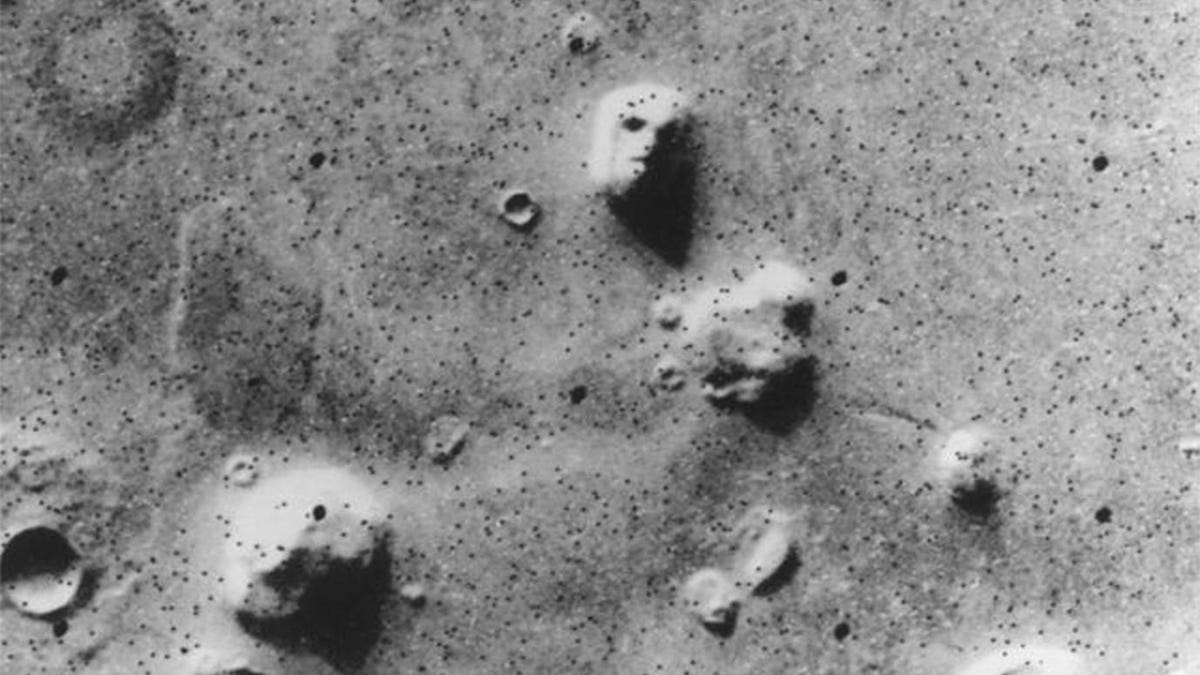The Face of Mars: A Martian mystery turns 40
On this day: On 25 July 1976, Viking 1 took a photograph of what appeared to be a humanoid face on the surface of Mars.
The search for extraterrestrial life has so far turned up no positive results. But a photograph taken on 25 July 1976, 40 years ago Monday, led many to believe we might eventually find it much closer to our own back door.
The picture, of course, is the famous "Face on Mars" picture, taken by the Viking 1 spacecraft as it made its way to the Red Planet. Taken over the Cydonia region of Mars, the image shows what seems to be a giant humanoid face, carved out of or even built onto the surface of Mars.
NASA scientists at the time believed that the face was an illusion caused by shadows and pareidolia (when the mind mistakenly perceives a familiar pattern), and when they revealed the picture back in 1976, they captioned it as such. "The huge rock formation in the centre, which resembles a human head, is formed by shadows giving the illusion of eyes, nose and mouth," the caption read.
This didn't stop rumours flying thick and fast that the face was evidence for life on Mars -- life NASA was covering up. It appeared in radio shows, talk shows, tabloid papers, books and websites. Popular culture assimilated it, too. It made appearances in TV shows "The X-Files" and "Futurama", video games "Final Fantasy IV" and "XCOM", the comic book "Martian Manhunter" and others.
Image of the mesa taken by the Mars Reconnaissance Orbiter in 2007.
We weren't to see another photo of the region for more than 20 years. In April 1998, NASA flew the Mars Global Surveyor over Cydonia and managed to capture more images of the region. What these images revealed is that NASA's first assessment was correct. The formation is a mesa 1.5 kilometres (0.93 miles) across, and the facial features are merely shadows caused by its shape.
"It reminds me most of Middle Butte in the Snake River Plain of Idaho," said Jim Garvin, chief scientist on the Mars Exploration Program. "That's a lava dome that takes the form of an isolated mesa about the same height as the Face on Mars."
More photos have been snapped since. The Mars Global Surveyor went back for a second pass in April 2001, and the Mars Reconnaissance Orbiter got a hi-res image in 2007. The European Space Agency got in on the action too, taking photographs with Mars Express.
Which isn't to say everyone is convinced. Today, there are those who still believe that the mesa is evidence for an extinct civilisation on Mars. There may well have been one, it's true, but we'd need to see more evidence than shadows on rock to believe it.


